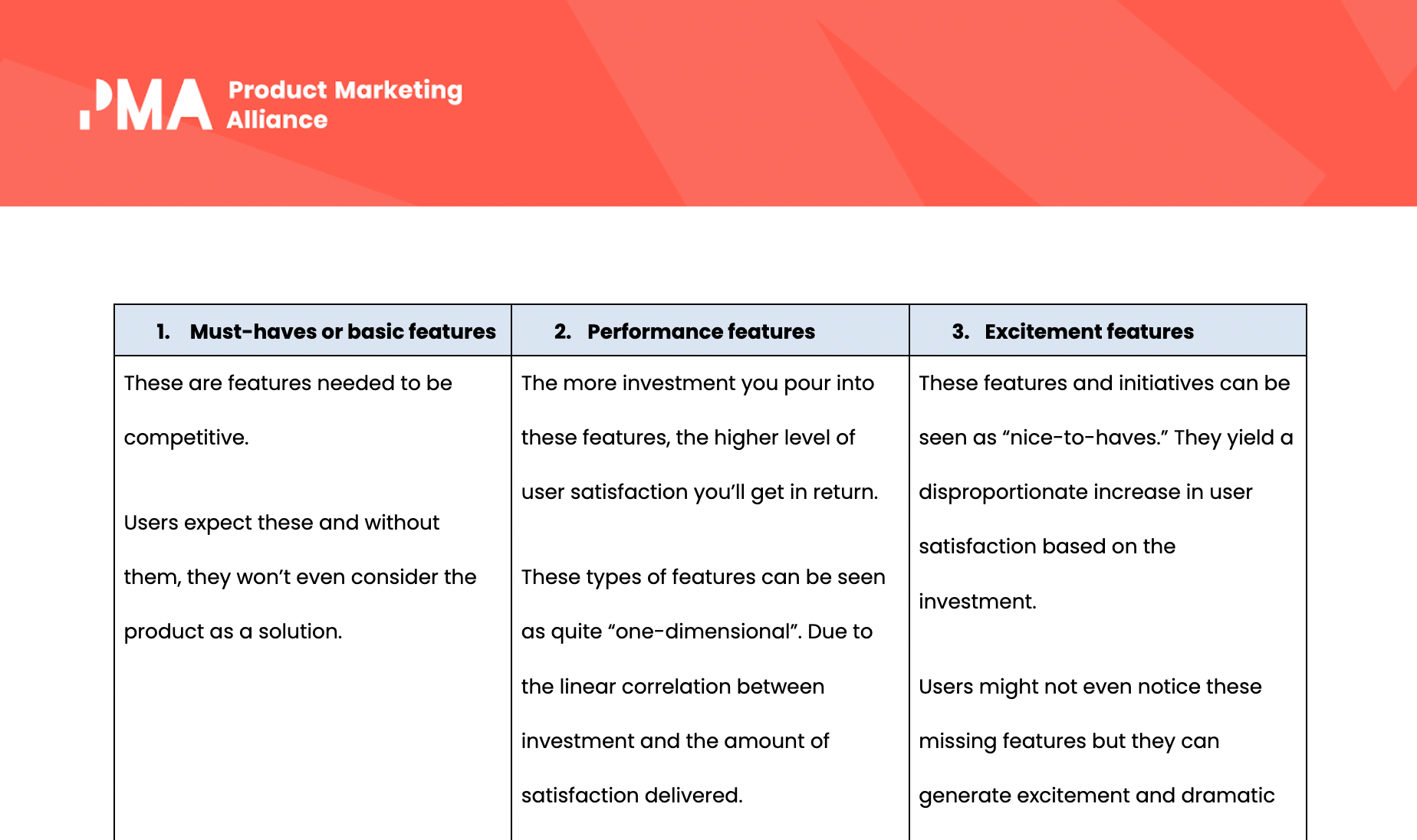The KANO model (pronounced “Kah-no”) is a prioritization framework that helps product teams rank initiatives on a product roadmap based on their potential to satisfy users.
The framework allows teams to create a priority list of potential new features, weighing them according to: (1) how likely they are to delight users, and (2) and the resources required to implement them. This model focuses on three categories of features:
- Must-haves or basic features: These are essential features that users expect. Without them, users won't even consider the product.
- Performance features: Investment in these features correlates linearly with user satisfaction—the more you invest, the more satisfied users will be.
- Excitement features: These are "nice-to-have" features that can generate significant user delight with relatively less investment. Users might not expect these features, but they can create excitement if included.
Why is the KANO framework useful?
The KANO model framework is invaluable for several reasons:
- User-centric prioritization: It helps teams prioritize features based on user satisfaction, ensuring that development efforts align with user needs and desires.
- Efficient resource allocation: By categorizing features into must-haves, performance features, and excitement features, teams can make informed decisions about where to allocate their resources for maximum impact.
- Enhanced competitiveness: Including essential and performance features ensures that the product meets market standards and user expectations, while excitement features can differentiate the product from competitors.
- Strategic planning: The framework provides a structured approach to feature prioritization, helping teams focus on the most impactful initiatives, especially when time and resources are limited.
How to use our KANO model framework template
To use our KANO framework template, start by downloading a copy below. Once you have the template, follow these five steps:
- Categorize features: Start by listing all potential new features and categorize them into must-haves, performance features, and excitement features.
- Evaluate user impact: Assess how each feature will impact user satisfaction. Must-haves are essential for basic user acceptance, performance features enhance satisfaction proportionally, and excitement features can significantly boost satisfaction.
- Consider investment required: Evaluate the resources and investment needed to implement each feature. Balance this against the potential user satisfaction to determine priority.
- Collect user feedback: Use surveys, questionnaires, and other feedback methods to validate your categorization and understand user preferences.
- Prioritize and plan: Based on user feedback and your evaluations, prioritize features on your roadmap. Focus on implementing must-haves first, followed by performance features, and then excitement features.
Download your KANO framework template





















 Follow us on LinkedIn
Follow us on LinkedIn 

.svg?v=85af970283)